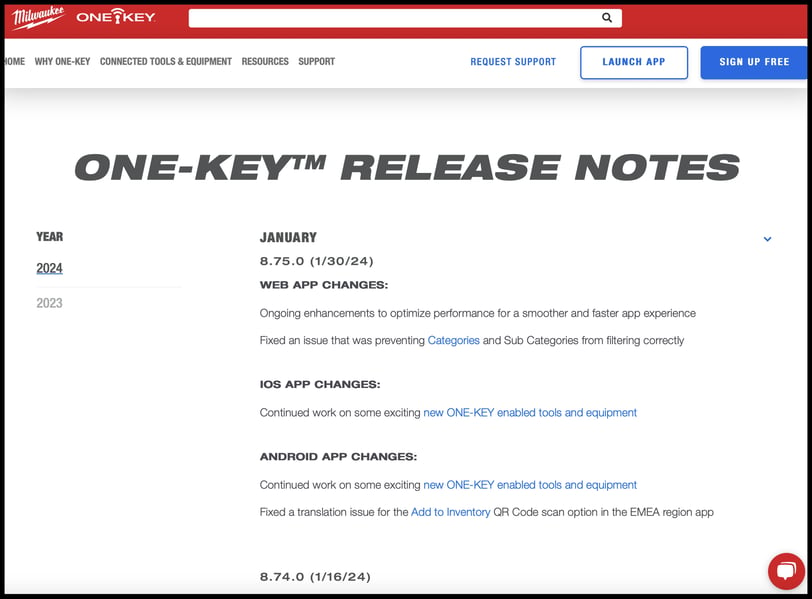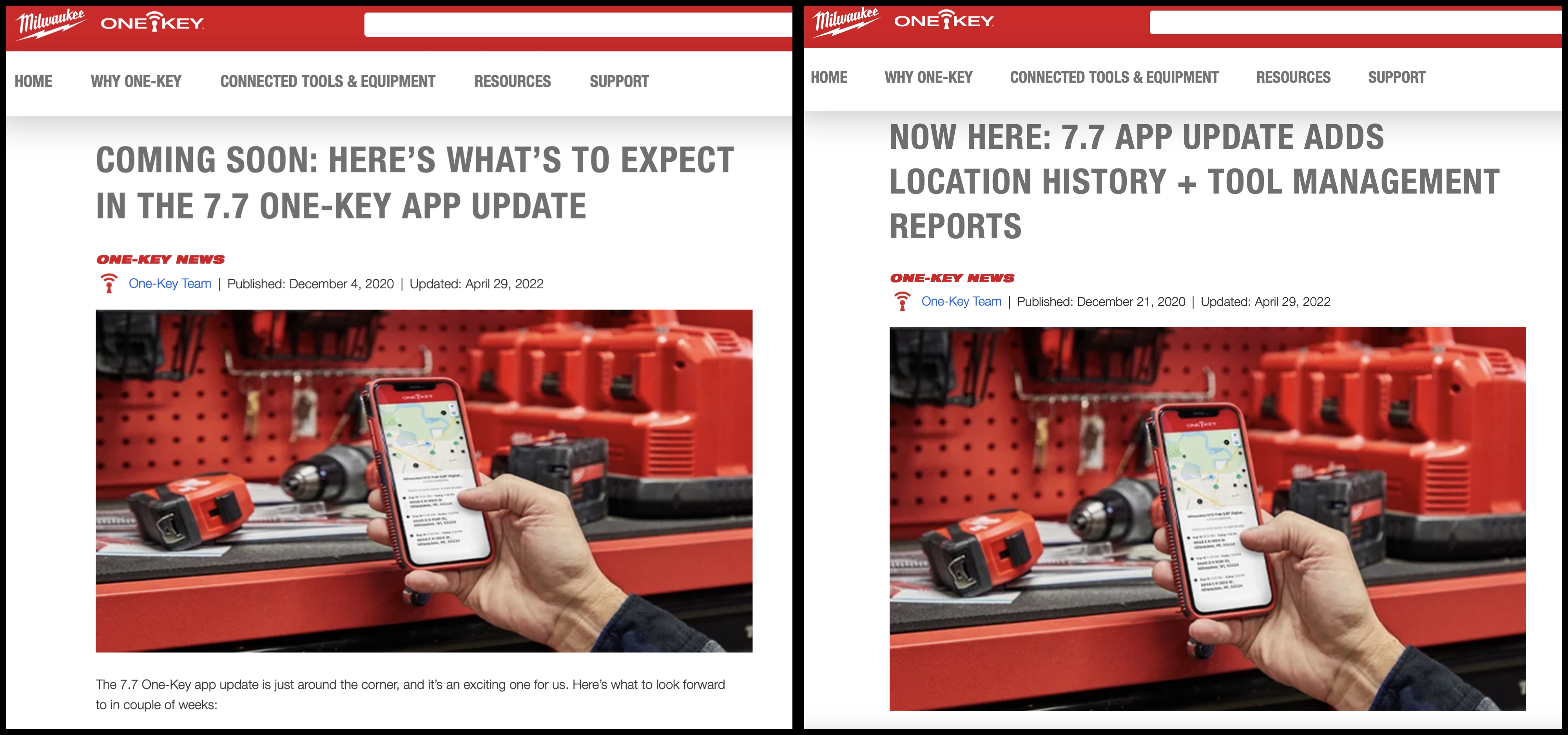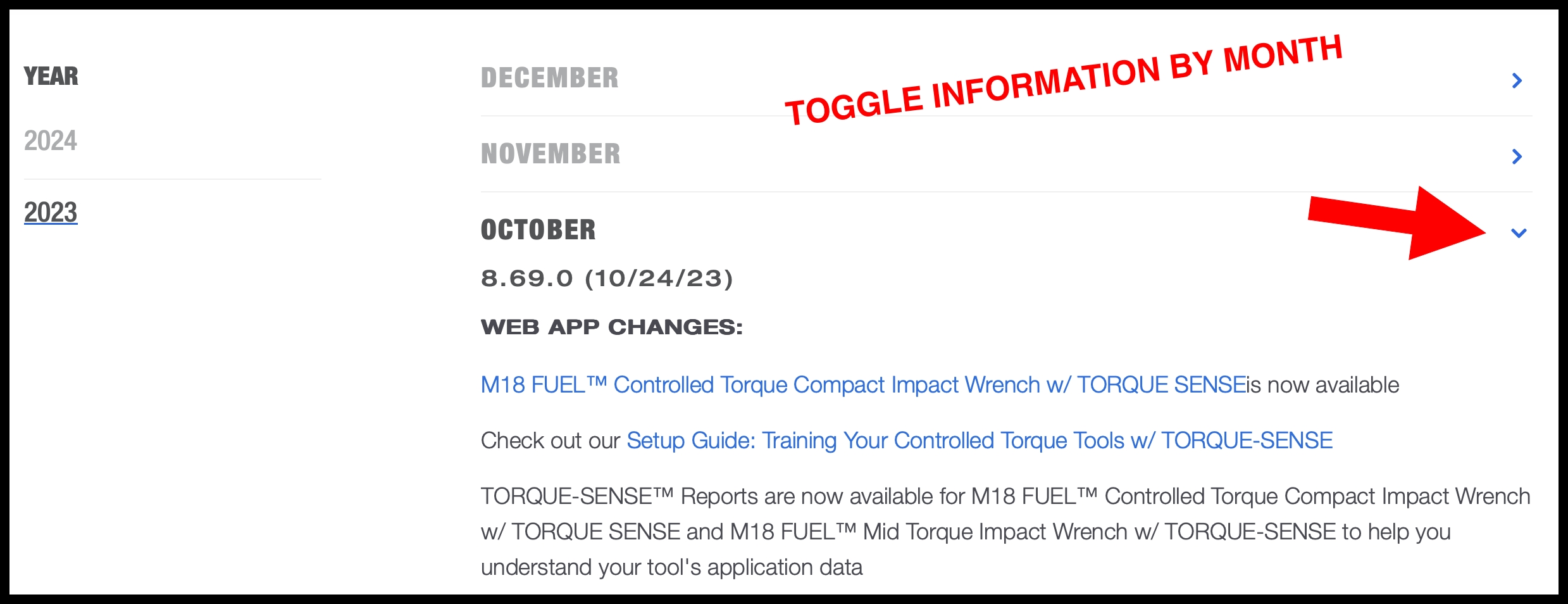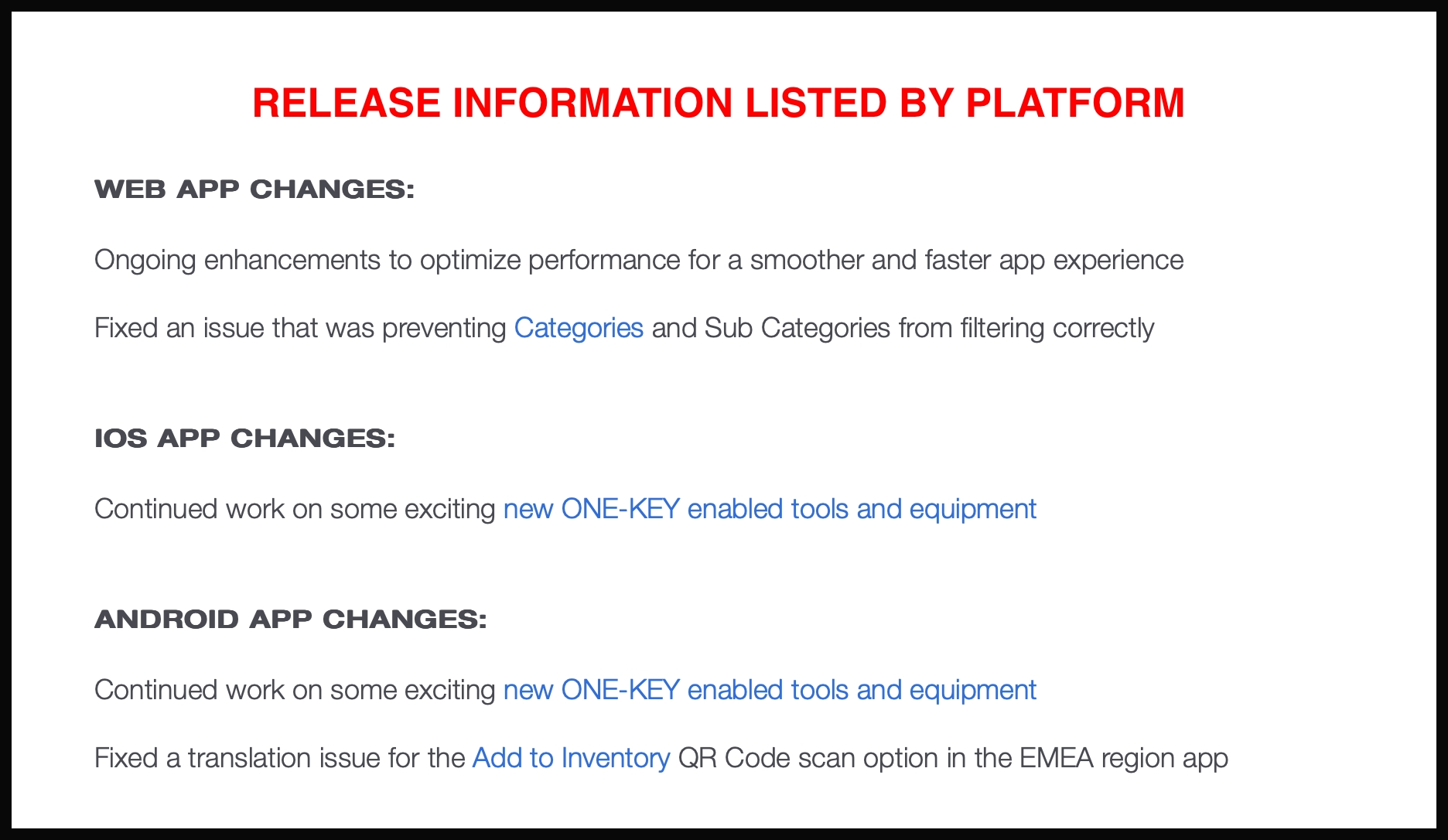Table of Contents

Great news: We’re happy to announce a new page to help you stay informed on the latest functionality in the ONE-KEY™ app!
Our new release notes page is the newest page of our informational One-Key website and can be accessed online:

We recommend bookmarking this page, which will provide a few unique advantages:
- The ability to stay up to date on the recent app updates and what they mean to you (across all platforms – Android, iOS, and web).
- An ongoing record of historical releases and app updates over the years that can be reflected on if/whenever the need presents itself (i.e., release notes are visible in app stores like Apple’s and Google’s Play Store, but they’re fleeting and don’t provide a full historical record of every release provided to these stores. This new page, by contrast, does).
- Finally, a record of web-based releases – Whereas the mobile versions of One-Key (iOS and Android) have their own app stores, the computer version, which is browser-based (i.e., not a desktop app downloaded to your local computer), does not. That is, releases to the app happen dynamically. In other words, unlike a notification on your smartphone when there’s a new version of One-Key to download and you can click through to the app store to see what the new update adds, web-based updates have previously lacked this ability. This new page changes that.
Background: Why Did We Make a Release Notes Page & How Did the Process Start?
There’s been a lot of lore around One-Key release notes depending on whom you ask.
In the Early Days
The app was first launched in 2015, and sometime after that, release notes were primarily prepared for these app stores and written in collaboration with the department’s heads of UX and product.
As One-Key News Articles
Fast forward to 2019, One-Key’s first content manager took the reins of the release notes initiative as part of launching the One-Key connectivity blog site you’re reading now.
Release notes during this time became more robust, with early examples of news articles that discussed feature-based releases (e.g., people management) and even tinkered with a “Coming Soon!/ Now Here!” format where articles were published notifying readers of upcoming features and as these features were rolled out and available to use:

This approach was centered on providing helpful, timely information about app functionality as it was being worked on and rolled out. These articles also provided a marked improvement to the frequent, nondescript app store release notes (i.e., reading “general performance improvements”) that resulted from the team becoming busier. That is, having a dedicated content manager helped provide more clarity on individual releases.
But there were still many questions to answer related to release notes – e.g.,
- What if there truly isn’t much released (i.e., if the nondescript “general performance improvements” notation is actually genuine)? What constitutes a “release notes” news article?
- Is the “Coming Soon!/Now Here!” format effective in a blog publication style? I.e., while a push notification may be helpful to deliver an alert-style, transitory message in a fleeting moment, delivering the same alert-style information in the blog format may not have the same effect.
- What happens as time goes on? How do we keep track of older release notes so this information can be easier found by users who would like to have access to this information? In other words, while news articles can be found on these earlier releases, having a more central repository of this information was needed.
Release Notes Page Initiative (Current)
The most current iteration of our app release notes, what we’re unveiling today, represents a truly collaborative initiative tackled by our marketing, development, and QA teams.
New Approach to How Information about Releases Is Gathered
Prior to this, rounding up release notes across platforms involved our content manager having to seek out individual team members (often software developers, business analysts, product managers, and product owners), determine the appropriate resource, and getting information about upcoming releases that was then used to be translated for nontechnical audiences.
The new approach starts with the stakeholder of the release kicking off the release with the team, and an iteration of these release notes are prepared at the start of the release (as opposed to chasing down the stakeholder and writing the release notes at the end of the release cycle and just before they’re due to app stores).
These release notes are then finalized and then shared with the appropriate parties responsible for sharing them out.
New Approach to How Information about Releases Is Shared
These release notes are now shared differently, too. In addition to these release notes being published to the app stores, we will now share them dynamically on our release notes page.
This page is easily updatable, allowing us to update the page as the release is rolled out. Because we control this page, our release notes page should be considered the source of truth for the most current release information:
https://onekey.milwaukeetool.com/release-notes
Furthermore, the release notes page format allows us to share information about web-based releases and maintain all this information in a single page, two changes that were previously not the case.
Release Notes Page Functionality
The release notes page is pretty straightforward to use and has some basic functionality that we’ll discuss in greater detail below:
- Organization: Release notes are organized by Year, then Month, then Platform.
- Accordion buttons for easier navigation and organization of information on a single page.
Year
As we just launched this page, what’s available is limited to the past two years, but we plan to keep this page updated with each new release. Our One-Key developers are on a two-week release cycle, so be sure to bookmark this page if you’re interested in seeing what’s been rolled out (on mobile as well as web)!

Month
In addition to year, release notes are now shown in order by month.

We’ve released the page with some prebaked functionality to organize all this information and make the page easier to use:
- Accordion buttons – Similar to how an accordion expands and retracts, we’ve implemented accordion buttons that can be expanded to show more information or retracted back to hide information and/or save space on the page as you scroll further down.
- First release loads first, everything else closed – By default, the most recent release will be expanded when you load this page. That means when you land on this page:
-
- The current year and the most recent month will be open by default. From here, the app updates are listed in sequence of when they are released. As the year goes on, we’ll add new accordion buttons for each month.
- The same functionality applies when clicking through to previous year – When you click into a previous year, the same basic accordion button functionality will apply to that year and most recent release of that year. In other words, when you click into 2023, December will be open by default. Close this and you’ll have easy access to the remaining months from that year (which are closed by default so you can choose the specific month you’re looking for and expand it more easily).
Platform
Finally, in addition to organizing by year, then month, you can also view releases for every platform in one view as opposed to separate pages (we’ll get to why we chose that route in a moment).
Once you’ve selected the year and month you’d like to see, each platform is displayed with web displaying first, followed by iOS and Android:

Why a Single Release Notes Page? Solving Old Problems in a Single Page
We purposely designed our release notes resources as a single page as opposed to separate pages for each platform. This move was a deliberate choice to ensure that nothing got lost.
The previous iterations of release notes had their disadvantages:
- Relying on the app stores meant that older releases would be inaccessible.
- Individual release news articles ensured every release could theoretically be reported on, but in terms of older releases, users would have to search for specific releases and didn’t have a central repository of release information.
The accordion button functionality discussed above helps solve both of these problems by bringing every release onto one page (i.e., a central repository for release information) but making access specific information within this repository easier to find (i.e., toggle by year, month, then get more granular by each release in every month and by each platform).
At Long Last: Release Notes Page (A Single Source of Truth)
We hope you’ll bookmark our release notes page if staying up to date on the newest One-Key functionality is a priority for your team. This page represents a collaborative effort to provide the most intuitive solution for keeping our users abreast of information related to our software update release information. One-Key is a constantly evolving application, so keeping our users informed is an utmost priority.
Similar to how we consolidated our knowledge base, the release notes page represents our commitment to continuous improvement and constantly rethinking how we approach our web properties to provide you with the most intuitive experiences.
